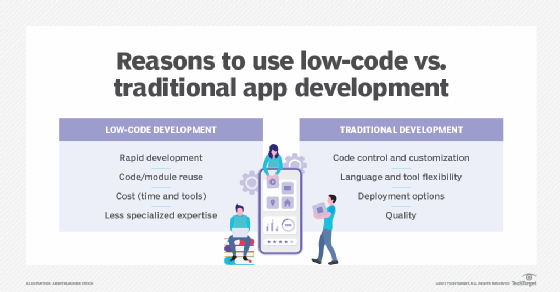
Getty Images/iStockphoto
Pegasystems' Blueprint enables automation with no code
Pegasystems uses generative AI to simplify previously difficult development tasks that unite back-office and front-office data, and launches a GenAI-led learning system.
Pegasystems added support for more users in different vertical industries with its latest release of a no code app dev platform called Blueprint along with retooled Pega Academy training modules with generative AI.
Pega users have already built 35,000 apps with the free Blueprint tool, released in March, the company claimed. It works with a series of pull-down menus that gradually narrows down the process a user intends to automate, starting with an industry such as manufacturing or healthcare. It then suggests tasks around which to build automations in that industry, languages to support, and attributes and users associated with that task.
Blueprints are intended to be "first drafts" of process automations for Pega users backed by best practices developed by the company and partners such as Accenture, said Don Schuerman, Pegasystems CTO and vice president of product marketing. Pega users can use generative AI (GenAI) to visualize processes and greatly reduce the time to create the software to connect back-end systems to front-end systems, such as legacy ERP to modern customer service apps.
Pegasystems CEO Alan Trefler outlined the company's GenAI strategy, which is: AI serves as an assistant to humans, who will remain in control of their processes and process design. In contrast, autonomous artificial general intelligence -- where AI runs the show -- is dangerous and probably impossible to use without running afoul of some regulations, he said.
"With Blueprint, we use the AI to help create the optimal process, but it's still [created by] a person," said Trefler, who added that the genesis of Blueprint was to make it easier to develop apps on Pega, previously a common user complaint. "It's really fast, but the processes are curated by experts and by people who understand it -- so you know what you're running."

It's an interesting deployment of GenAI compared with most vendors, which so far have mostly used it for content search and summarization, said Predrag Jakovljevic, an analyst at Technology Evaluation Centers. The fact that the Blueprints not only generate apps, but the user interfaces as well takes GenAI further than most current tech vendors.
"I like the aspect that they use GenAI for more than just to summarize and regurgitate something. The market is full of copilot-type stuff -- which Pega has too, of course -- that, while useful, is quickly becoming table stakes," Jakovljevic said.
Pegasystems' workflow angle vs. simple GenAI content generation is interesting, he said.
"How it can customize for industries and drive adoption and usage is valuable too," Jakovljevic said. "Blueprint is making actual innovation happen by helping orgs rethink their workflows."
Socrates employs GenAI for Pega training
Pegasystems also released Pega Socrates today, a generative AI update to its free Pega Academy learning platform. Based on the Socratic method of learning -- which involves asking and answering questions -- the new modules create a dialog between user and GenAI education model.
The company said Pega Socrates can challenge advanced users who want to sharpen their Pega skills or teach beginners, based on a combination of how they self-identify upon enrollment and as the dialogue flows through the course. That's in contrast to many corporate e-learning systems, typically based on watching videos and taking multiple-choice tests to prove competency.
"[Traditional e-learning content] is also written and designed to probably the 25th-percentile student," Trefler said. "You can't design this for the person who's really super quick, understands and picks stuff up fast, because you lose everybody else. It has to be written to a below-average expectation of understanding. Now, you don't have to worry about that anymore. If you're getting it, it just picks up the pace."
Pega's releases came in conjunction with its PegaWorld user conference this week in Las Vegas.
Don Fluckinger is a senior news writer for TechTarget Editorial. He covers customer experience, digital experience management and end-user computing. Got a tip? Email him.






